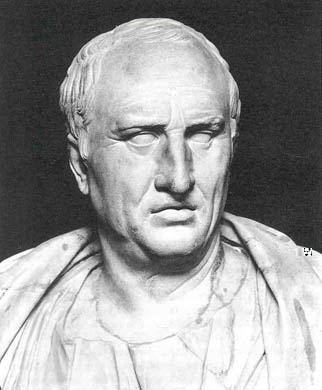If time allows later in the election cycle (or even after the election), I’m hoping to dedicate five days of posting to more detailed discussions on each of the five Canons of Rhetoric. But for now, I’d like to just introduce the four we didn’t get the chance to talk about on the most recent Critical Voter podcast.
As mentioned during that podcast, these five Canons evolved from the Greek and Roman traditions, both of which placed enormous emphasis on oratory as the means to achieve political goals in the context of a pure democracy (in the case of Athens) and a representational democracy (in the case of Rome – and the US).
Not all of the Canons resonate with contemporary audiences as they once did with ancient ones. And some of the material covered in one or more Canon is still taught, but outside the framework of the “Big 5.”
For example, Memory played a much bigger role in ancient times when orators were expected to memorize their speeches in their entirety (lacking, as they did, Teleprompters and even easy access to the tools of writing). In fact, writing was still a novel concept (certainly in the days of Athenian democracy) with some thinkers (such as Socrates) rejecting writing completely in favor of the kind of mental acuteness derived from not just committing a speech to memory, but committing to memory all of the information needed to hold up one’s end of an argument from start to finish.
We’ve actually touched on areas of Style and Delivery in our discussions of, among other things, rhetorical devices. These were recognized, even in classical times, as being the important extras needed to turn a strong argument into a compelling one.
Style was more concerned with the way ideas were expressed in an argument (again a subject covered in our discussion of rhetorical devices), while Delivery had more to do with the overall performance of a persuasive presenter which could include not just words spoken but how gestures, facial expressions and body language were integrated into the presentation.
To a certain extent, both Style and Delivery were lumped into that notion of “mere rhetoric,” as much of what was taught in the ancient world was dismissed as irrelevant in the modern one. Which is too bad, given that Delivery would be a nice category to include discussions of those modern techniques (such as playing to the media) that make up much of the dynamics of our current political environment.
Since we seem to be bouncing around our Canons (and given that Arrangement is the one Canon we did talk about at length on the podcast), this leaves us with Invention which is the Canon that includes all of the content knowledge (including content knowledge of the subject being debated, and content knowledge related to understanding of what we now call critical thinking itself).
We’ll be talking a lot more about both content knowledge and the modern delivery of political messages over the next two podcasts which will be dedicated to Media Literacy next week, followed by Information Literacy the week after that.
In the meantime, you can visit here if you’re interested in learning more about the Five Canons of Rhetoric. And if you’ve got a Jones to learn more about Cicero, in addition to this best-selling biography on one of history’s greatest rhetoricians, I highly recommend Robert Harris’ Cicero trilogy (two of which, Imperium and Conspirata are currently completed) as an entertaining and enlightening window in the importance of this great personality and the era in which he lived.
The post The Canons of Rhetoric appeared first on Critical Voter.
